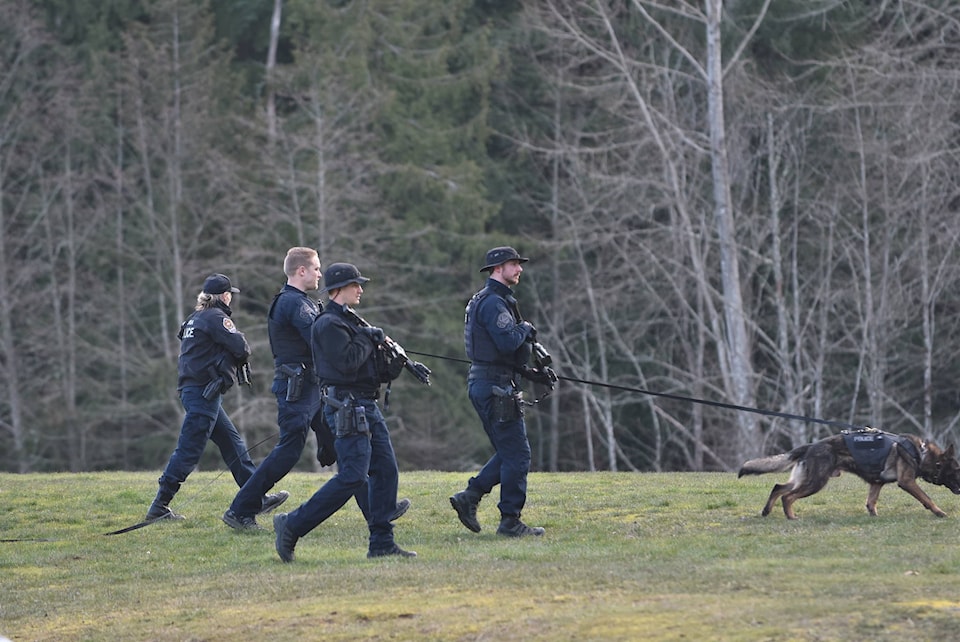As an expected 500,000 descend on Washington, D.C. on March 24 to rally against mass shootings at U.S. schools, protesters will also take to the streets of Victoria.
Organizers of Saturday’s March for Our Lives in Washington, D.C. are hoping to draw attention to incidents like the one Valentine’s Day at Marjory Stoneman Douglas High School in Parkland, Fla. where 17 people died.
Marches are taking place in solidarity around the world, including Victoria, where a rally will take place outside the B.C. Legislative Assembly at 1 p.m.
Political differences — along with very different guns laws — separate Washington, D.C. from Vancouver Island, yet the very fact that an American issue has generated a local response speaks to the emotional strength of this issue.
“In reality, when we look at our record within the province of British Columbia, and within Canada, we don’t see events like that within our country,” said Harold Caldwell, School District 61 director of learning. “So that is out of context, when a conversation is in relation to that…we take safety within our schools, very, very, very seriously.”
The most recent serious case of violence at a B.C. school dates back to Nov. 1, 2016, when two female students at Abbotsford Senior received stab wounds. Thirteen-year-old Letisha Reimer later died from her injuries.
But for all of the attention that such cases receive, they are incredibly rare.
“We don’t see the violence that you hear of – be it through media or through rumour, through social media – we just don’t see it in our district,” said Caldwell.
The Distrct 61 committee that handles incidents the district deems to be “extremely and/or severe” has reviewed a total of five cases this year. None involved violence.
“It is rare to get a kid come to the district level for a violent incident,” said Caldwell. “That is not to say that kids don’t have their issues with each other in school. But it is not like we are seeing fights every day. It’s not like kids are bringing weapons to school, because if they do, they come to me.”
He said school district officials inform parents about safety issues throughout the school year. The school safety plan informs parents about the rationale for various emergency drills and procedures. It also tells parents how they can inform themselves when such procedures take effect, be it a hold-and-secure (activated to secure the school during an ongoing situation outside the school) or a lock-down (triggered in case of major incident or threat of social violence within the school, or in relation to the school).
A recent lockdown at Bayside middle school in Central Saanich is a prime example, after the administration received multiple student reports on March 1 of a man hiding in bushes near the school with what may have been a weapon.
This issuance prompted what local officials called the largest emergency response ever in the history of the district. Emergency Response Team arrived with an armoured vehicle, extra weapons and a dog handler to search a one-kilometre radius of the school. It would take a nerve-wracking five hours before parents could be told the threat was ended. No suspect was located.B.C.
Such incidents can create anxiety, because some time may pass until officials can share information with affected parents.
“You hear lock-down and your child is in that school, you are worried, and I get that,” said Caldwell. “But let’s be patient, and know that we train for this process to unfold the way it should, so that we can keep kids safe. We will provide you with that information as we have that time through this process to do it.”
Education Minister Rob Fleming says communication, reporting and awareness are keys to the ministry’s system established in 2012, known as the Expect Respect and A Safe Education (ERASE) Bullying Strategy. A review for updates is currently underway.
“When you look at events south of the border, I think school districts are looking for ways they can evaluate whether what we have in B.C. schools is significant enough,” Fleming told Black Press. “A lot of it is acting on tips. Information comes from students talking in the school, that gets to a teacher, maybe a parent, and it’s passed to a principal or a school administrator.”
In 2017, training for “digital threat assessment” was introduced, and 17,000 staff have completed the training. A provincial team of experts in violence risk assessment and prevention gives direct support to schools and school districts.
B.C. schools are generally designed so almost all doors, internal and external, can be locked, ministry officials say. Many have policies where all doors are kept locked except one close to the office to ensure visitors check in.Education ministry officials say many B.C. districts have gone to mandatory identification badges for school entry. Some have used the authority available under the School Act to install video surveillance cameras, which requires approval of the individual school planning council.
“Overall, I’m going to say that our schools are loving and caring environments.,” Coldwell said. “They are that way because of who we are as a society, and they are that way because of who we are as educators within those buildings.”
– with a file from tom fletcher
